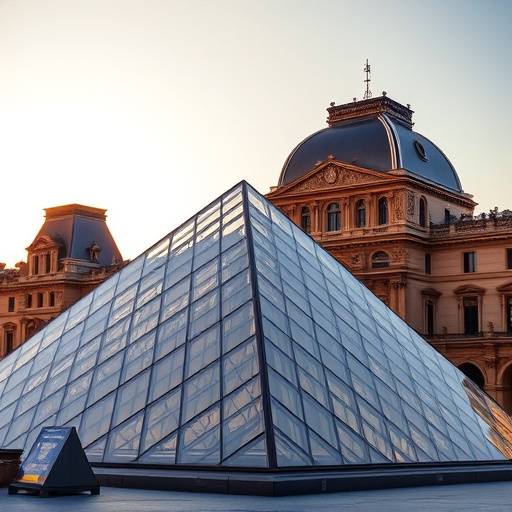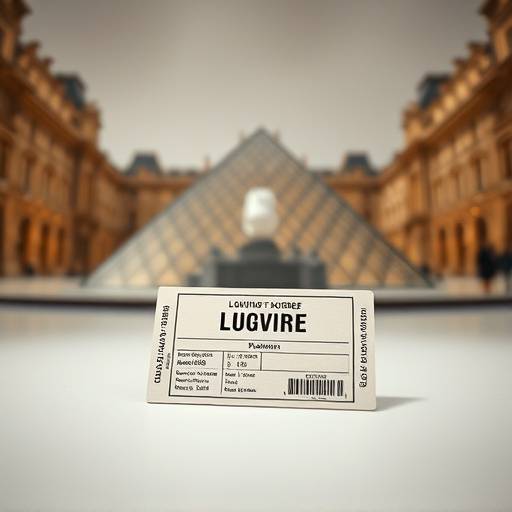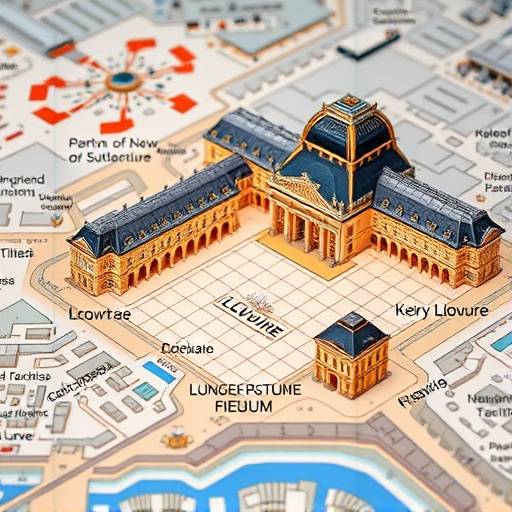
Louvre Articles and Guides
Explore our in-depth articles to help you plan the perfect visit to the Louvre Museum. From ticket
information to the best times to go, we've got you covered.
Decoding Louvre Ticket Types: A Comprehensive Guide
Navigating the Louvre's ticketing system can be daunting. This guide breaks down the different ticket
types available, helping you choose the best option for your visit. Understanding the nuances of each
ticket will save you time and money, ensuring a seamless entry to one of the world's most renowned
museums.
Single-Entry Tickets: The Classic Louvre Experience
The most straightforward option, the single-entry ticket, grants you access to the Louvre's permanent
collection and temporary exhibitions. This is ideal for first-time visitors or those who want a general
overview of the museum's highlights. Purchase your ticket online in advance to skip the potentially long
lines at the ticket counters.
Combined Tickets: Maximizing Your Parisian Art Adventure
For avid art enthusiasts, consider the combined ticket options. These tickets often bundle admission to
the Louvre with other museums or attractions in Paris, such as the Musée d'Orsay or the Centre Pompidou.
Combined tickets offer significant savings if you plan to visit multiple cultural institutions during your
trip. Research available combinations to find the best fit for your interests.
The Paris Museum Pass: Unlock the City's Artistic Treasures
If you're spending several days in Paris and intend to explore numerous museums and monuments, the Paris
Museum Pass is an excellent investment. This pass provides unlimited access to over 50 museums and
attractions, including the Louvre. The pass is available for different durations (e.g., 2, 4, or 6 days),
allowing you to tailor it to your itinerary. Note that even with the Paris Museum Pass, advance booking
may be required for certain attractions, including the Louvre.
Free Admission Opportunities: Accessing Art on a Budget
The Louvre offers free admission to certain categories of visitors. Individuals under 18 years of age, EU
residents under 26 years of age, and disabled persons and their accompanying carer are eligible for free
entry. Additionally, admission is free for all visitors on the first Friday of each month from 6 p.m.
(except July and August) and on 14 July (Bastille Day). Ensure you have valid identification or proof of
eligibility to take advantage of these free admission opportunities.

Tips for Purchasing Tickets: Avoid Scams and Overpricing
-
Always purchase tickets from the official Louvre Museum website or authorized resellers.
-
Beware of unofficial websites selling overpriced or invalid tickets.
-
Verify the authenticity of the website before entering your payment information.
-
Consider purchasing timed-entry tickets to reduce queuing time.
-
Check for special offers or discounts available for specific groups or during certain periods.
Planning Your Visit: Practical Tips and Strategies
A well-planned visit to the Louvre can significantly enhance your experience. From navigating the vast
galleries to avoiding crowds, these practical tips will help you make the most of your time at the
museum.
Best Times to Visit: Avoiding the Crowds
The Louvre is a popular destination, so expect crowds, especially during peak season. To minimize your
wait time and enjoy a more relaxed experience, consider visiting during the off-season (November to March)
or on weekdays. The museum is generally less crowded in the mornings or during evening openings. Arrive
early or stay late to avoid the busiest hours.
Navigating the Museum: Maps and Itineraries
The Louvre is enormous, and it's easy to get lost in its maze of galleries. Obtain a map of the museum
upon arrival or download a digital version to your smartphone. Plan a specific itinerary based on your
interests, focusing on the collections or artworks you most want to see. Prioritize your must-see exhibits
and allocate sufficient time for each area.

Essential Amenities: Lockers, Restrooms, and Cafés
The Louvre provides various amenities to enhance your visit. Lockers are available for storing bags and
coats, allowing you to explore the museum hands-free. Restrooms are located throughout the museum, and
cafés and restaurants offer refreshments and meals. Take advantage of these amenities to stay
comfortable and energized during your visit.
Accessibility Considerations: Ensuring a Comfortable Visit for Everyone
The Louvre is committed to providing an accessible experience for all visitors. The museum offers
wheelchair rentals, elevators, and adapted restrooms. Service animals are permitted, and audio guides are
available with descriptions for visually impaired visitors. Plan your visit in advance, contacting the
museum's accessibility services for specific assistance or information.
Dress Code and Etiquette: Respecting the Art and Fellow Visitors
The Louvre does not have a strict dress code, but it's advisable to dress comfortably and respectfully.
Avoid wearing overly revealing clothing or carrying large bags that could obstruct other visitors. Refrain
from touching the artworks and maintain a respectful noise level. Photography is generally permitted, but
flash photography is often prohibited.
Beyond the Mona Lisa: Unveiling Hidden Gems in the Louvre
While the Mona Lisa is undoubtedly the Louvre's most famous attraction, the museum boasts a vast
collection of equally captivating artworks. Venture beyond the crowds and discover these hidden gems that
offer a unique glimpse into art history.
The Winged Victory of Samothrace: A Majestic Sculpture
Perched atop a grand staircase, the Winged Victory of Samothrace is a breathtaking Hellenistic sculpture
depicting the Greek goddess Nike. Its dramatic pose and intricate details make it a must-see artwork,
often overlooked in the rush to see the Mona Lisa.
The Wedding Feast at Cana: Veronese's Grand Masterpiece
Spanning almost 70 square meters, Paolo Veronese's "The Wedding Feast at Cana" is the largest painting in
the Louvre. This monumental artwork depicts a lavish wedding scene, showcasing Veronese's mastery of color
and composition. Take your time to admire the intricate details and vibrant imagery of this Renaissance
masterpiece.
The Code of Hammurabi: Ancient Babylonian Law
Housed in the Department of Near Eastern Antiquities, the Code of Hammurabi is one of the oldest
deciphered writings of significant length in the world. This basalt stele contains a collection of laws
enacted by the Babylonian king Hammurabi in the 18th century BC. Its historical significance and
intricate cuneiform script make it a fascinating artifact to explore.
The Egyptian Antiquities Collection: A Journey Through Ancient Egypt
The Louvre's Egyptian Antiquities collection is one of the most extensive in the world, featuring artifacts
from various periods of ancient Egyptian history. Explore sarcophagi, statues, jewelry, and other relics
that offer a glimpse into the lives and beliefs of the ancient Egyptians.
The Apollo Gallery: Opulence and Grandeur
The Apollo Gallery, a magnificent hall adorned with intricate frescoes and gilded decorations, is a stunning
example of French Baroque architecture. This gallery, once part of the royal palace, showcases the
opulence and grandeur of the French monarchy. Admire the exquisite details and lavish embellishments of
this architectural masterpiece.


